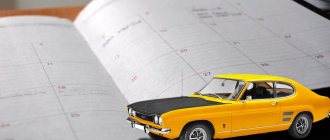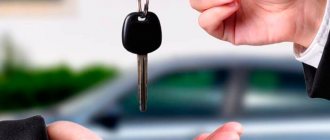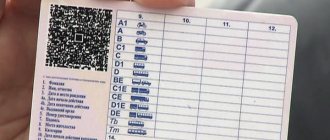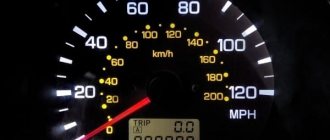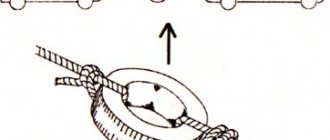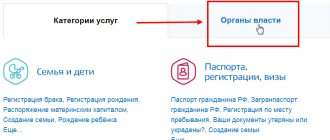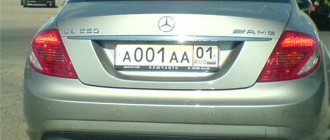Where is the best place to buy a used vehicle?
The most common method, which previously had no alternatives, is buying from hand. The buyer himself searches for a suitable car through advertisements, contacts the seller and negotiates the terms of the transaction. The main advantage of this option is the opportunity to bargain with the current owner of the car and slightly reduce its price. Read about the intricacies of trading and ways to save money when buying a car in this material.
However, there are also some disadvantages:
- When purchasing a car second hand, there is a high risk of its malfunction. During an external inspection, it may be difficult to notice certain defects, and many drivers do not consider it necessary to undergo a technical inspection before concluding a transaction.
- There is a risk of falling for scammers. A buyer who is not a car expert may not be able to identify problems with the car. It may be brought from abroad without the necessary customs formalities or be wanted. This can lead to serious problems with the law in the future.
Buying a used car at a dealership is safer for the buyer than buying it second hand. Any car that goes on sale at a dealership first undergoes a comprehensive diagnostic test. When certain defects are identified, they are immediately eliminated.
In addition, a thorough check of legal aspects is carried out. Car dealership specialists determine the place of production of the car, the number of its past owners, actual mileage, maintenance, and so on.
Buying a car from a dealership deprives the future owner of a number of troubles.
We talked in detail about buying a car in a showroom or from someone else here.
However, the price will likely be higher than if purchased from a private party. In practice, a better option is to buy a car from a dealership, albeit for several thousand more, but get peace of mind regarding the legality of the transaction and the serviceability of the car. Another advantage of this option is the opportunity to receive free warranty service from the seller’s service.
Types of car dealerships
Car dealerships can be divided into two types - official dealers and private showrooms specializing in the sale of used cars.
Official dealers (partners of automakers) make a profit from the sale of cars from large automakers with whom they have a contract. Used copies usually come to them via Trade-in. That is, the buyer trades in his used car, pays extra and gets a new dealer car.
The second type is showrooms specializing in the sale of used cars. This is their main income. Often such a car dealership looks like an ordinary parking lot with many cars of different brands.
Pros and cons of purchasing from a showroom
Having decided to buy a used car at a car dealership, the buyer must evaluate the advantages and disadvantages of such a transaction. The advantages of this solution include:
- Checking the legal history of the car. Car dealerships care about their reputation and carefully select the cars that go on sale. The risks of purchasing a problem car are minimized.
- Diagnostics of a car before putting it up for sale. The qualifications of the official dealer's specialists should not be in doubt.
- Availability of guarantee. When making a purchase at a dealership, you can be sure that if significant problems are identified, the dealer will repair it or return the money.
Along with the advantages, there are also some negative aspects:
- It is unlikely that you will be allowed to test drive the car. This is due to the lack of insurance and the need to maintain odometer readings.
- It will also be difficult to conduct a detailed inspection of the machine. The dealer may not allow you to measure compression or remove spark plugs.
- Increased car price. Salons rarely reduce prices for used cars, which cannot be said about private sellers.
If you manage to start the engine or perform a test drive
It is extremely rare for people to take a car for a drive at a car dealership, since most of the hidden problems are revealed while driving. But asking to start the engine right in the cabin is quite possible. At the same time, pay attention to the absence of extraneous noise, tapping, popping or any whistling. Vibrations in the steering wheel will also indicate problems with the vehicle.
Another tip: test the pedal stroke. There should be no dips or jams in them. Shift gears, and then make sure the selector moves smoothly, turn on the turn signals, and also check the functionality of the front and rear optics. During a test drive, you can evaluate the acceleration of the car, as well as fully check the operation of the braking system.
Purchasing methods
There are several ways to purchase a used car from a dealership.
In small salons
This option is one of the most undesirable. Typically, such organizations buy the cheapest cars with significant defects and sell them at a large markup. But in this case, the issue is not only about price. Repairs of such cars are carried out as cost-effectively as possible.
It is unlikely that anyone will spend significant funds on a car that will be sold in the future. This leads to possible technical problems in the future. It’s also not so simple with documents. Small showrooms and resellers usually do not register the car as their own.
Until the actual registration, the car remains in the possession of the previous owner. The reseller will try to avoid mentioning himself in the papers and sell the car with the signature of the previous owner under a fictitious contract.
This scheme usually works, and the new owner registers the car without any problems. However, in certain cases there are misunderstandings.
Let's say the old owner may get tired of waiting for the sale and cancel the registration of the car in his name. Then the new buyer will face serious problems when registering. But it will be almost impossible to get funds back from the reseller.
In general, buying a car from a reseller is a valid option. But before concluding a contract, it is important to carry out a detailed diagnosis of the car and require the seller to carry out the transaction on his own behalf, indicating the full price of the car in the documents.
In a relatively large center
In large salons, everything is much simpler with documents. Typically, the company enters into a vehicle commission agreement or an agreement for the provision of sales services with the owner.
Attention! In such agreements, a separate clause is discussed that the previous owner must not terminate the registration of the car, and also that he guarantees the absence of any claims to the car from third parties.
In such showrooms, the technical condition of the car is usually much better than in small companies and resellers. Large organizations are concerned about their own reputation and do not sell cars with significant defects.
But minor flaws that do not have a significant impact on the operation of the car, such as scratches, can be disguised so that the appearance of the car matches its price. The quality of such repairs also does not always meet the necessary requirements.
In addition, large showrooms provide the buyer with a guarantee on large parts and components of the machine. It, in essence, is a time to check the product, but in many ways protects the consumer from purchasing low-quality products.
Thus, you can buy a used car from a large dealership. For the future owner, this is a guaranteed legal purity of the car and protection from serious defects immediately after purchase. We talked about how to check the legal purity and technical condition of a car here.
But it is worth remembering that the salons do not have information about how the car was serviced and used, so no one can guarantee you that you will use it for a long time and without problems. In addition, prices in such companies can be significantly higher than in small salons.
According to the trade-in system
This is the safest option for buying a used car. According to this system, cars are handed over not because they are completely unfit for use, but to receive a discount on a new car. A mandatory requirement is that the vehicle being rented out does not have any serious problems and is ready for active use in the future.
It should be taken into account that showrooms that primarily sell new cars do not repair used ones. Cars are sold in the same condition as their previous owners. Accordingly, you will notice the existing defects immediately and can draw conclusions about whether it is advisable to buy a particular car.
Salons working with a trade-in system also usually offer reasonable prices, since their goal is prompt sales and compensation for losses incurred due to discounts.
How to buy a used car from an official dealer?
Buying a used car from an authorized dealer involves a certain sequence of actions.
Is it possible to check the car yourself?
Most often, it is impossible to conduct a full vehicle inspection. The buyer can only inspect the vehicle. When looking at a potential new car, it is important to pay attention to the following points:
- Appearance of the car. Inspect the body for abrasions, chips, and dents. Also evaluate the car’s paint job—highlights may indicate an accident history.
- Movable mechanisms. It is worth inspecting the doors, hood, trunk, etc.
- Compliance of numbers with the data specified in the PTS.
- Salon. Evaluate the covering, under which defects may be hidden.
- Odometer readings.
- Trunk. Estimate the distance from the body to the parts. There is no rust allowed inside the trunk.
Inspecting the machine will allow you to identify its weak points, which will be easier to deal with in the future. We wrote about the inspection, check and test drive of a car when buying a car here, and the intricacies of checking a gearbox when buying a car are described here.
What to pay attention to when signing a contract?
Before signing the purchase and sale agreement, it is important to study all its clauses and notes. This is necessary even if the document has already been provided by the manager for review, since it can exist in two copies - for inspection and for signature. The signature version may include edits that the buyer does not want.
According to the law “On the Protection of Consumer Rights”, the buyer can return the purchased car within 15 days after the transaction is concluded. Returns are possible if there is a clause about this in the contract.
We wrote here what to do after signing the purchase agreement.
What documents should I check?
When buying a used car at a dealership, you need to check the following documents:
- Certificate of deregistration of a car with the MREO. If it is missing, you need to request a document confirming that the car is not stolen.
- Service book. This document includes information about all work carried out on the machine. The data will help identify the weak points of the vehicle and pay attention to them in the future.
Read everything about buying a used car, including how to find a suitable vehicle and fill out the documents correctly, and learn about vehicle diagnostics before buying a used car here.
If you decide to purchase a car, then our useful articles on buying a car without license plates, using maternity capital, at an auction, transferring money during a transaction, purchasing a new car at a dealership, negotiations, and insurance when buying a car can help you.
Buying tips
To make buying a used car a joyful experience, follow these simple instructions:
- Before going to the salon, read reviews about it on the Internet.
- Take a friend with you. Ideally, someone who understands cars. But if there is no such person, you can take anyone, the main thing is not to go alone. This is necessary so that you can be stopped from taking rash steps, plus it will be easier to protect yourself from psychological pressure.
- Read the purchase and sale agreement carefully, no matter how many times it is reprinted. Ignore the manager’s words that this is the same contract that you just read. There they can change not only the item you knew about, but also any other.
- Before purchasing, look at the PTS and check the data from it with those specified in the contract. Sometimes sellers overestimate the year of manufacture, and after the buyer gives the money, the car suddenly “goes old”.
To be sure that the car is in good working order and has not been damaged, use the on-site car inspection service. An experienced technician will arrive at the right time, conduct an inspection and help you avoid making mistakes when choosing a used car.
